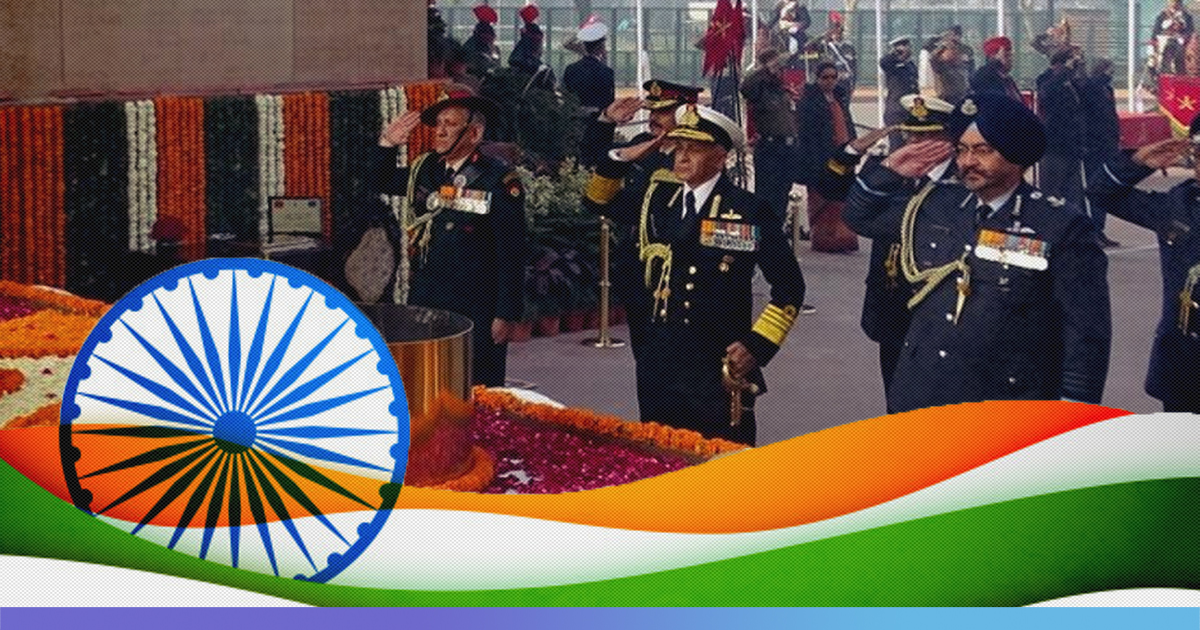
From British Colony To Military Prowess: Evolution Of Indian Armed Forces
12 Aug 2019 7:33 AM GMT
As India marks 73rd Independence Day, The Logical Indian brings to you the journey of the Indian Republic from the clutches of the British rule to becoming one of the fastest-growing economies in the world. Over the course of the next few days, we will focus on key parameters, sectors and issues that are crucial to the Union Of India.
Indian Armed forces are among the most powerful in the world. Fifth most powerful to be precise. The armed forces include three professional services-Indian Army, Indian Air Force and Indian Navy. The Indian Armed forces are supported by Indian Coast Guard, paramilitary organisations and other allied forces.
The President of India is the Supreme Commander of the forces. Coming under the Ministry of Defence, the Indian military forces have active 1.4 million personnel serving. Additionally, it is the world’s largest volunteer army. India is one of the leading countries when it comes to fund allocation towards defence forces. India has the fourth-largest defence budget.
The Indian Armed Forces have seen great transformation since 1947, here we trace its progress.
Post Independence
1947 was the year India got independence. It was also the year when the subcontinent was bifurcated into two independent nations-India and Pakistan. Bifurcation was not only made on the territorial lines but also in terms of resources. Accordingly, the forces were divided too, in terms of personnel, ships, divisions and aircrafts.
In January 1949, KM Cariappa became the first Indian Commander-in-Chief. In 1954, Air Marshal Subroto Mukherjee became the first Indian Commander-in-Chief of the Indian Air Force. And in the same year, Vice Admiral Ram Dass Katari became the first Chief of Naval Staff.
Major Wars & Conflicts Faced
One of the first conflicts Indian Armed forces had to face was just after independence, the Indo-Pakistan war of 1947-48. This war was fought over the then princely state of Jammu and Kashmir. The war ended with a ceasefire being declared on December 31, 1948. It concluded with 65% of the territory under Indian control and rest under Pakistan’s.
In 1961, tensions rose between India and Portugal over the territory of Goa under the Portugal occupancy. This conflict was popularly known as Operation Vijay. The operation lasted for 36 hours, post which the Portugal forces retracted from Goan territory, after over 450 years of colonial rule.
Apart from 1947 Indo-Pakistan war, the two countries engaged in conflicts on multiple occasions-1965, 1971 and 1999.
The Indo-Pakistan war of 1965 was followed by Operation Gibraltar launched by Pakistan into Jammu and Kashmir. The Indian retaliated and this war saw the engagement of the largest tank battle since World War II. The war lasted for 17 days and resulted in casualties on both sides. The United Nations intervened and the Tashkent Declaration was signed.
In 1971 war between India and Pakistan happened during the liberation in East Pakistan (now Bangladesh). The war lasted for 13 days and ended with Pakistani signing the Instrument of Surrender. On December 16, 1971, East Pakistan was formed into Bangladesh.
The Kargil conflict of 1999 was an armed conflict between India and Pakistan in Kargil district of Kashmir. The infiltration of Pakistani troops into the Indian side of the LoC resulted in the conflict. The conflict lasted for over two months. Conclusively, Pakistan withdrew its forces and July 26 since then has been celebrated as the Kargil Vijay Diwas every year.
The Sino-India war of 1962 was between India and China. The conflict over the Himalayan border was the main reason behind the war, however, tensions were growing since the time India started hosting Tibetan refugees. On November 21, China extended the unilateral ceasefire.
The Present Situation
The Indian Armed Forces, apart from defending the borders, are also involved in various nation-building operations. Its contribution during natural calamities is of prime significance. In recent time, Indian Armed Forces have worked with the state machinery to help during Kerala floods of 2018, Cyclone Fani in Odisha and the Assam floods, among many others.
Indian Armed Forces have also been active participators in the UN peacekeeping missions. So far, India has participated in over 40 peacekeeping missions and has contributed about 2 lakh troops. In 2014, India became the third-largest troop contributor.
The article is a part of our series on 73rd Independence Day in our endeavour to pay homage to all those who lost their lives fighting for the freedom that we enjoy today.
Also Read: Understanding Kashmir, From Conflict To Becoming An Integral Part Of India
 All section
All section













